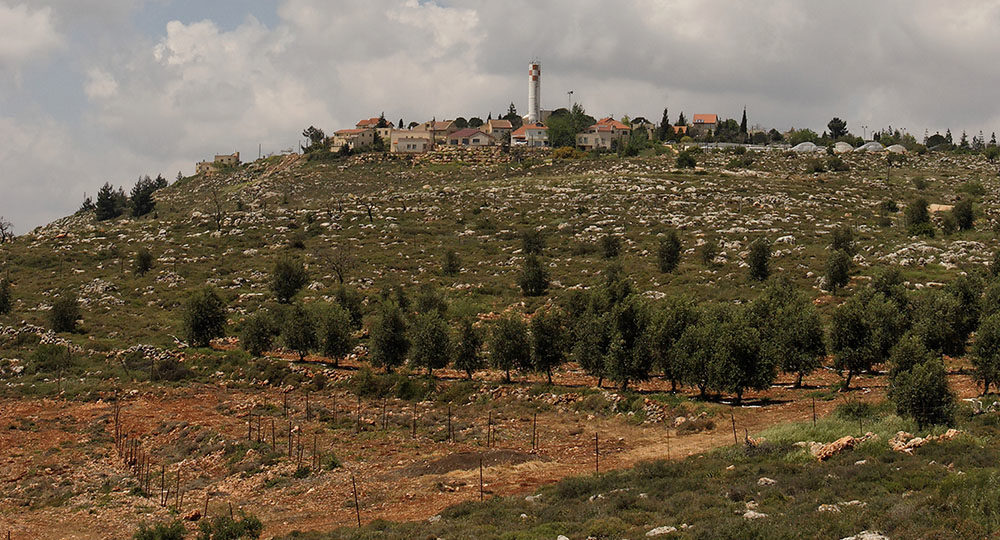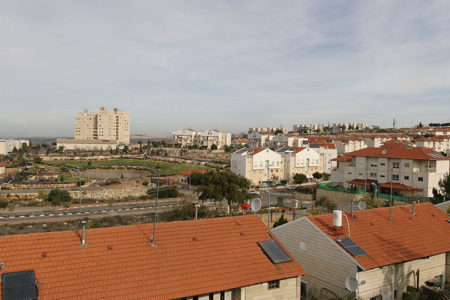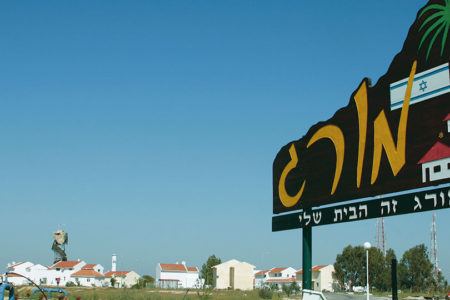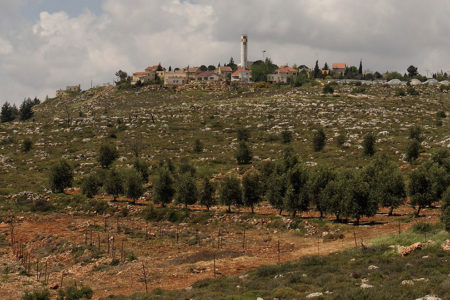A Life-Changing Journey Through Samaria
Follow me on a life-changing journey to three of my favorite places in Samaria. And make sure you have your Bible, your camera, and a good pair of hiking boots!
‘The Pass’—Where Two Men Routed an Army
The Bible simply identifies the first stop on our journey as “the pass.” Most travelers know little about the site, but it is where King Saul’s son Jonathan and his armor bearer climbed from Gibeah toward Michmash, routing the entire Philistine army. Two men defeating an entire army sounds almost impossible until you stand here and read the account. The Philistines camped at Michmash and sent raiding parties along the major roads to the east, north, and west. Steep cliffs and a narrow pass made the southern edge of their camp seem secure, so they only assigned a small force to guard “the pass” (1 Sam. 13:17–18, 23). When Jonathan and his armor bearer shouted to the garrison from the valley below, the Philistines didn’t know there were only two men climbing up the face of the cliff. The garrison commander sent a panicked report back to the main base: The Israelites are launching an attack against our lightly guarded south flank! We’ve already lost 20 men!
Standing here and looking down at the pass, the story makes perfect sense. Jonathan and his armor bearer were indeed brave…and brazen. They chose to attack at the one spot where the Philistines never expected Israel to mount an assault. And God gave them a remarkable victory.
Shiloh—An Object Lesson on Disobedience
The next stop on the journey is Shiloh, where Joshua set up the Tabernacle after conquering the land. This low hill surrounded by mountains is tucked away in a remote part of Ephraim and offered security for Israel’s central place of worship.
Standing in a viewing tower on the site, we can see an ancient stone wall outlining the spot where the Tabernacle once stood. Inside that larger rectangle is an area where the Holy Place and Holy of Holies were located.
But wasn’t the Tabernacle a tent? Why does the site have stone walls?
After the Israelites entered the land, they must have replaced the portable sanctuary with a more permanent structure. In fact, the walls help explain a passage from the life of Samuel. When God appeared to Samuel, the Bible says the boy lay down until morning then “opened the doors of the house of the Lᴏʀᴅ” (1 Sam. 3:15, italics added). The tent in the wilderness didn’t have doors, but this more permanent structure at Shiloh did.
Gazing at the red anemones now covering the site, we think about those in the past who also walked this hallowed ground: Eli, the high priest in the days of Samuel; Hannah, Samuel’s godly mother; and Samuel himself. And we remember Shiloh’s sad end after Eli’s wicked sons carried the Ark of the Covenant into battle. They were killed, the Ark was captured, and Eli died when he heard the news.
Later the rest of the priests fled Shiloh, carrying away the remaining articles of furniture, as the Philistines came to destroy the town. The House of God became a heap of rubble.
Shiloh ceased being the center of worship for Israel. Centuries later, through the prophet Jeremiah, God used the ruins as an object lesson for His people: “But go now to My place which was in Shiloh, where I set My name at the first, and see what I did to it because of the wickedness of My people Israel” (Jer. 7:12).
Shiloh is a beautiful spot, but its ruins remind us of the danger of disobeying God.
Gerizim—Our Fathers Worshiped on This Mountain
The last stop on today’s journey is Mount Gerizim. From here we have a magnificent view of Samaria. Immediately to our north is Mount Ebal. Joshua brought the children of Israel here to recite the blessings and curses of the Mosaic Covenant. Half the tribes stood on Mount Gerizim; the others stood on Mount Ebal. Between these two mountains was the ancient city of Shechem, where Jacob dug a well 4,000 years ago.
Two thousand years later, it was the scene of one of the most amazing encounters in history, where Jesus met with the Samaritan woman at the well and told her He was the Messiah (Jn. 4:25–26).
The woman was from Sychar, on the slopes of Mount Ebal. She walked a long distance to get water, and she came in the middle of the day when others weren’t as likely to be around. But instead of being alone, she found herself in the presence of a Jewish man who actually spoke to her and asked for a drink of water.
In the conversation that followed, she discovered He was more than a mere man. She assumed He must be a prophet, and she asked Him an indirect question that had divided the Jews and Samaritans for centuries: “Our fathers worshiped on this mountain, and you Jews say that in Jerusalem is the place where one ought to worship” (v. 20).
When the Samaritan woman said “this mountain,” she referred to where we’re now standing. Most of the remains around us are from a church built here in the fifth century, but there are also remnants of a temple the Samaritans built here nearly 1,000 years earlier. The Jewish people destroyed that temple more than a century before this woman’s encounter with Jesus—a reminder of the hatred that existed between the two groups.
Jesus answered the woman by explaining, “The hour is coming when you will neither on this mountain, nor in Jerusalem, worship the Father. . . . The hour is coming, and now is, when the true worshipers will worship the Father in spirit and truth; for the Father is seeking such to worship Him” (vv. 21, 23). Then Jesus revealed to her that He was the Messiah.
Mount Gerizim was originally the mount of blessing, but by Jesus’ day it had become a place of division, a symbol of the hatred that separated two groups who claimed the same spiritual heritage. Jesus’ message to the Samaritan woman was that God’s revelation to the Jewish people was the true Word from God and that the ultimate One to whom God had been pointing in His Word was Jesus Himself.
Well, it’s time to head home. What lessons can we take away from our journey through Samaria? For me, it’s the reminder that God’s fingerprints can be found throughout this amazing region. The tiniest details—from a place called “the pass” to “doors” on the Tabernacle to the ruins of a temple on Mount Gerizim—are all visible reminders that God’s Word is reliable and relevant for us today.







